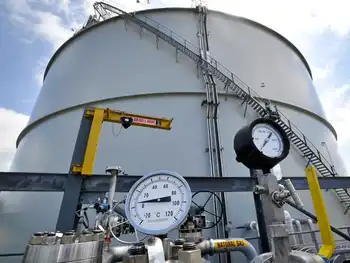Proposed underground power line could bring Iowa wind turbine electricity to Chicago

Electrical Testing & Commissioning of Power Systems
Our customized live online or in‑person group training can be delivered to your staff at your location.

- Live Online
- 12 hours Instructor-led
- Group Training Available
SOO Green Underground Transmission Line proposes an HVDC corridor buried along Canadian Pacific railroad rights-of-way to deliver Iowa wind energy to Chicago, enhance grid interconnection, and reduce landowner disruption from new overhead lines.
Key Points
A proposed HVDC project burying lines along a railroad to move Iowa wind power to Chicago and link two grids.
✅ HVDC link from Mason City, IA, to Plano, IL
✅ Buried in Canadian Pacific railroad right-of-way
✅ Connects MISO and PJM grids for renewable exchange
The company behind a proposed underground transmission line that would carry electricity generated mostly by wind turbines in Iowa to the Chicago area said Monday that the $2.5 billion project could be operational in 2024 if regulators approve it, reflecting federal transmission funding trends seen recently.
Direct Connect Development Co. said it has lined up three major investors to back the project. It plans to bury the transmission line in land that runs along existing Canadian Pacific railroad tracks, hopefully reducing the disruption to landowners. It's not unusual for pipelines or fiber optic lines to be buried along railroad tracks in the land the railroad controls.
CEO Trey Ward said he "believes that the SOO Green project will set the standard regarding how transmission lines are developed and constructed in the U.S."
A similar proposal from a different company for an overhead transmission line was withdrawn in 2016 after landowners raised concerns, even as projects like the Great Northern Transmission Line advanced in the region. That $2 billion Rock Island Clean Line was supposed to run from northwest Iowa into Illinois.
The new proposed line, which was first announced in 2017, would run from Mason City, Iowa, to Plano, Ill., a trend echoed by Canadian hydropower to New York projects. The investors announced Monday were Copenhagen Infrastructure Partners, Jingoli Power and Siemens Financial Services.
The underground line would also connect two different regional power operating grids, as seen with U.S.-Canada cross-border transmission approvals in recent years, which would allow the transfer of renewable energy back and forth between customers and producers in the two regions.
More than 36 percent of Iowa's electricity comes from wind turbines across the state.
Jingoli Power CEO Karl Miller said the line would improve the reliability of regional power operators and benefit utilities and corporate customers in Chicago, even amid debates such as Hydro-Quebec line opposition in the Northeast.











